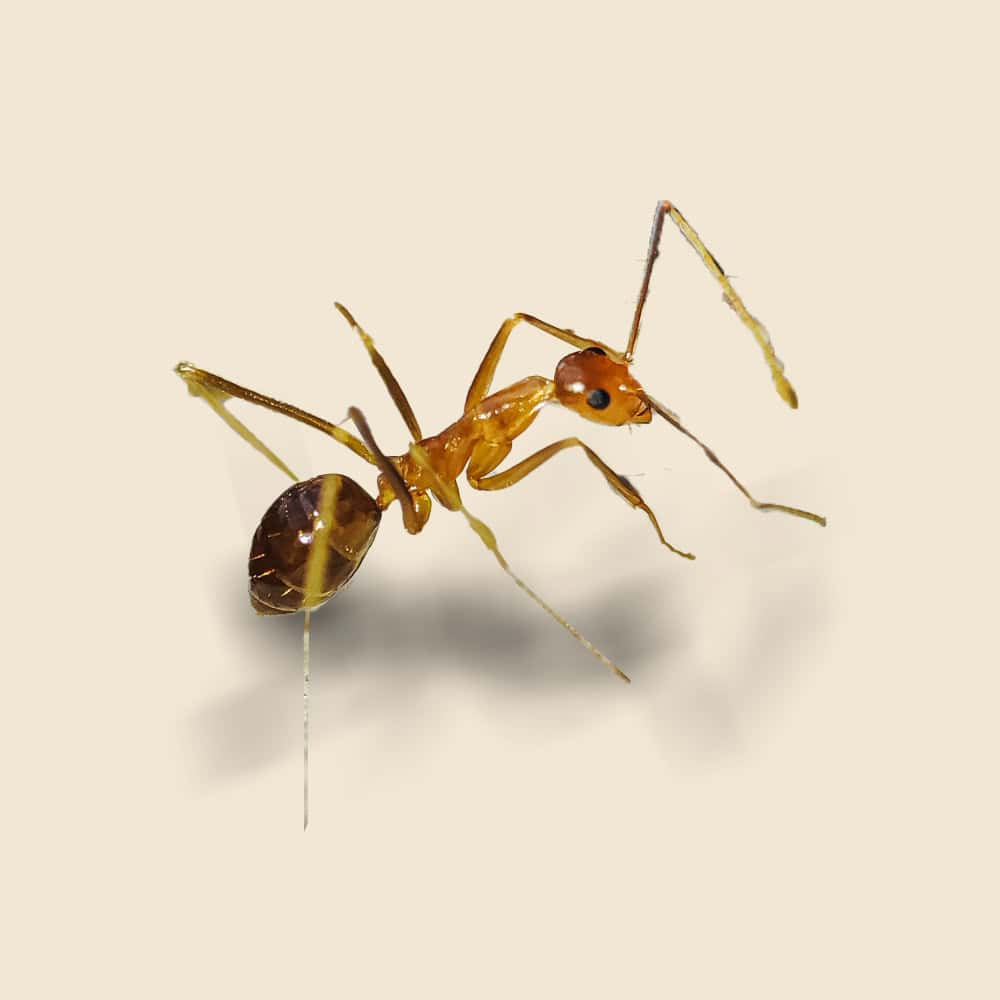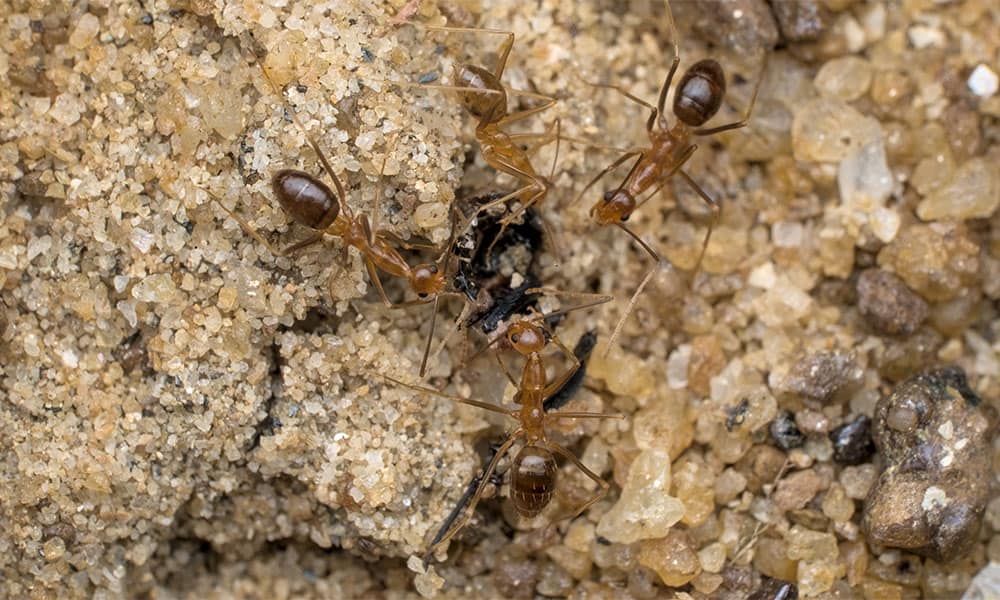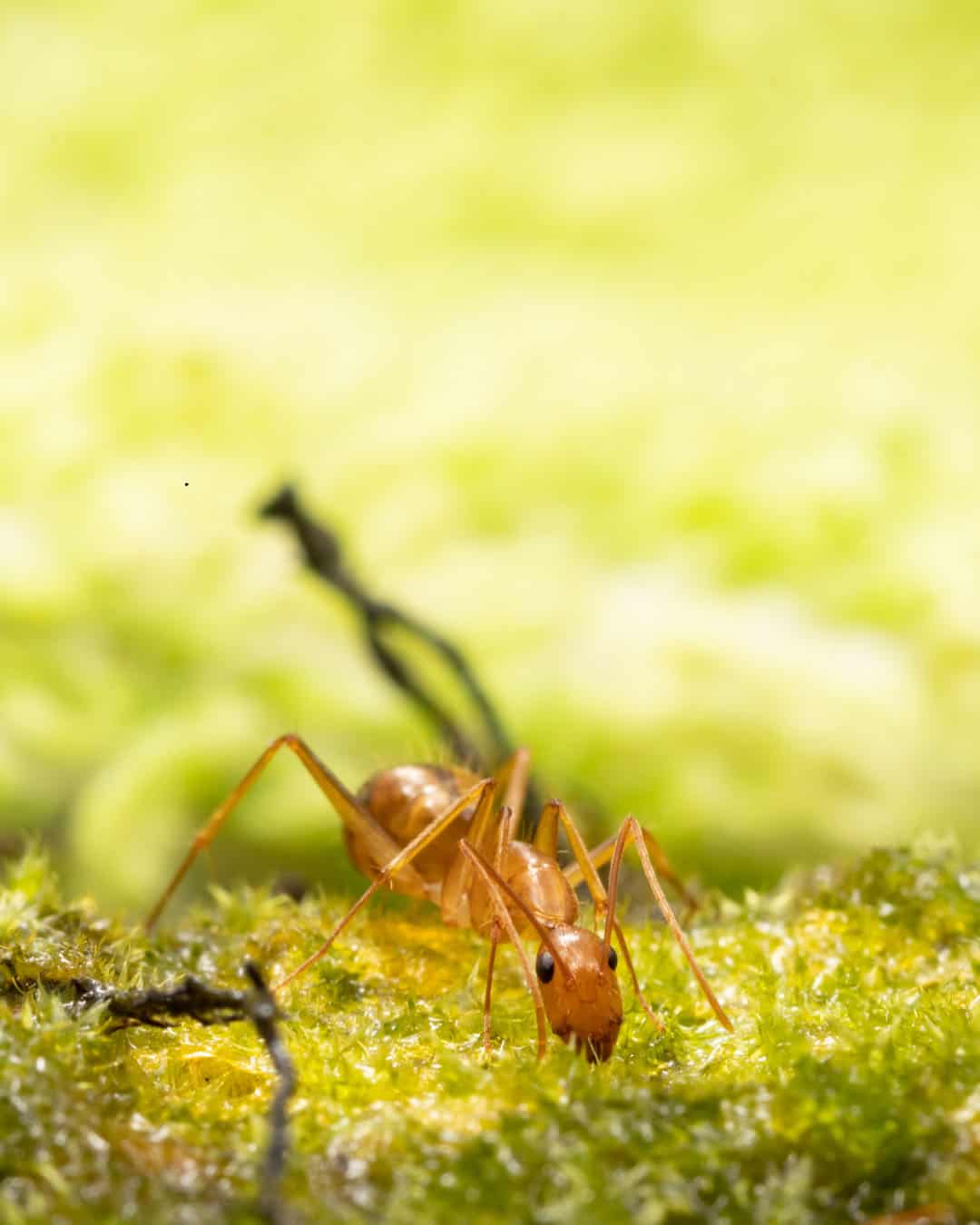Yellow Crazy Ant Facts & Information
Yellow crazy ants, known for their erratic movements and large colony sizes, can pose a significant threat to ecosystems, agriculture, and human infrastructure. These invasive ants are highly adaptable and aggressive, often displacing native ant species and disrupting natural balance.

Anoplolepis gracilipes
What You Need To Know About Yellow Crazy Ants
What do yellow crazy ants look like?
Yellow crazy ants are small, yellowish-brown ants with long legs and antennae. They are about 1/8 inch long and are known for their frenetic and erratic movements, which give them their “crazy” name.
What do yellow crazy ants eat?
Yellow crazy ants are omnivorous and have a diverse diet that includes sweets, proteins, other insects, and small animals. They also farm aphids and scale insects for honeydew, a sugary substance secreted by these pests.
What sort of habitat do yellow crazy ants live in?
Yellow crazy ants thrive in warm, humid environments and can be found in various habitats, including forests, grasslands, urban areas, and agricultural fields. They often nest in soil, leaf litter, under rocks, and inside buildings and other structures.
How do yellow crazy ants commonly behave?
Yellow crazy ants are known for their rapid, erratic movements and tendency to form large, multi-queen colonies. They do not form centralized nests, which makes their colonies spread over large areas. They are highly invasive and can displace native ant species and other insects.
Did you know this about yellow crazy ants?
Yellow crazy ants are considered one of the world’s worst invasive species due to their ability to form supercolonies and aggressive behavior. Interestingly, yellow crazy ants are known to spray formic acid as a defense mechanism, which can cause irritation to humans and animals and harm other insects.
Understanding Yellow Crazy Ant Infestations
Understanding yellow crazy ant infestations is crucial for effective management. These ants form supercolonies that can quickly spread and dominate large areas, outcompeting native species for food and resources. They are attracted to sugary substances and may invade homes, gardens, and agricultural fields in search of food. Their presence can lead to ecological imbalances, as they disrupt native plant-pollinator interactions and prey on small animals.

How Hearts Handles Yellow Crazy Ant Treatment
Hearts Pest Management employs an integrated pest management approach to handle yellow crazy ant infestations. Our process begins with a thorough inspection to identify nesting sites, foraging trails, and entry points. We then develop a customized treatment plan that may include baiting, barrier treatments, and habitat modification, ensuring the safety of your home and the surrounding environment.
Yellow Crazy Ant Inspection
Yellow Crazy Ant Treatment
Yellow Crazy Ant Prevention
Educational Resources

Think You Might Have a Yellow Crazy Ant Infestation?
At Hearts Pest Control, we understand the challenges associated with Yellow Crazy Ant infestations and are here to provide professional solutions tailored to your needs. Flourishing in warm and humid climates, they are prevalent in many regions, including San Diego County, Orange County, and Los Angeles County.